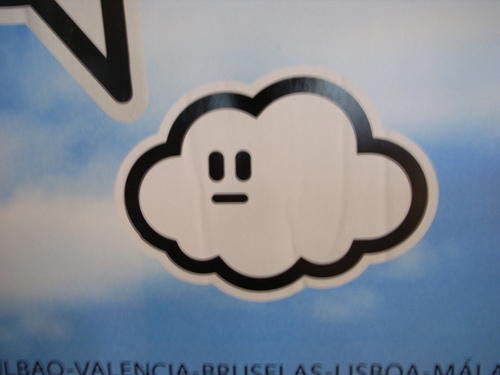After the interviews of Warren Ellis and Bruce Sterling for my book about the disappearance of "big futures", design fictions, the role of science-fiction, etc. here's the discussion with Sophia Al-Maria on Gulf Futurism:
Nicolas Nova: Gulf Futurism, as I understand it, corresponds to a clash between traditions and modernity in the Gulf, related with the pervasive influence of various sorts of technologies (smartphone, camera, networks among others). What makes it unique (considering other places experienced a similar influence)?
Sophia Al-Maria: My original thinking around Gulf Futurism as an umbrella term for a wide array of things happening to the people and the places around me was to do with the quiet tragedy occurring. People were losing freedoms and a grip on reality. They were narritivizing a history that never really happened. I guess I was also reading a lot of Baudrillard at the time and it all made sense, this sort of exodus from reality into something climate controlled and out of touch with ‘nature’ and truth. There was/is an abdication of control to circumstance. An easy adoption of technology is also key. When I was 16 for a girl to have a mobile was shameful. Now my 12 year old sister has an ipad but barely enough to eat every day from the rations divvied out between 14 people in a on-salary household. The focus is totally upended. Survival = being on the next level. Not sustaining your body.
NN: How do you see the situation evolving in the coming years (because of social/political/technological change)? Do you see this kind of aesthetic evolving?
SAM: I’m wary of aesthetics. They are a distraction. And seem to be everywhere these days. Maybe that’s why I’m not a very good visual artist. Of course there are people forging an ‘aesthetic’ out of the cultural specifics of the region. See the GCC collective.
NN: How does this notion of Gulf Futurism translate into everyday life/culture in the Gulf? (I'm thinking about music, visual arts, everyday products, packaging)
SAM: The mall is the stage for the transitions taking place and so the most important symbol of Gulf Futurism next to the mobile phone.
I think there is a global alienation becoming clear in the sort of hyper-refined and homogenated corporate omni-presence. There was a charming sort of … amateurism – maybe that’s the wrong word but – yeah- something unperfect in local products or at the very least a cultural specificity in imports like Miswak toothpaste from India or dairy from Saudi which is almost gone. Now it’s the mallmentia effect. I can’t tell if I’m in Hong Kong or LA or Dubai half the time I walk into a mall and that happens more and more these days because the mall is the dominant structure of a certain class group of which I am part. I literally find myself in malls whether on holiday or on my way home from work or on a weekend even and I am frequently confused as to how I even got there. It’s a place of weird pilgrimage in an era where to consume is to absolve yourself.
Joyce Nelson compared the mannequins in store fronts to statues of saints and apostles at the entrance of a cathedral and the changing room to a confession booth in her 1991 essay The Temple of Fashion and I think it’s true. An insidious evangelism has taken place without us knowing.
I observe this in the Gulf but it’s happening globally. Perhaps it’s more visible in the Gulf due to obvious cultural signifiers. And the darkness of things like segregation and the ‘public’ space of a mall becoming changeable.
futNN: Why "Futurism"? What's the future component of these phenomena?
Originally I threw that word out there because of the speed. The acceleration with which money has forced us to change, the speed of the hideous youth-in-car crash which is a daily sight. Bodies in the road. Casualties from our tiny local population lie on the side of the road in my daily commutes, thrown through their windshields, indifferent. There is a really bleak nihilism in youth culture. Also, I was thinking about the sort of basic concepts of ‘futurism’ in the classical sense before I had truly understood how dead the future is. I’ve gone through the process of grieving the ‘future’ as the 20th century imagined it. The Gulf is just a location where it experienced a brief flurry of possibility.
SAM: I'm generally intrigued by how cultural trends influence people's representation of the future. This is why I'm curious about Gulf Futurism. I wonder: how do you think such aesthetic and cultural phenomenon can be important or relevant for Westerners (let's assume there is such thing as "Western people")?
Assuming that, I think whatever aesthetic one might align with an idea of Gulf Futurism is again, a culturally non-specific one. A corporate one. An isolated one. A shiny, glitzy version of the dystopia rising elsewhere. Here you don’t have to experience suffering. It will be regulated, medicated etc. You don’t have to see the grist of the mill, they will be hidden as is the case with labor in the region. That’s not to say there isn’t a cultural stamp of Arabness on this. But I find it to be much more to do with corporate culture and aspirations and very occasionnally what shards are left of the failed utopic dream of pan-Arabism which sometimes rears its head in the Gulf in strange places.

